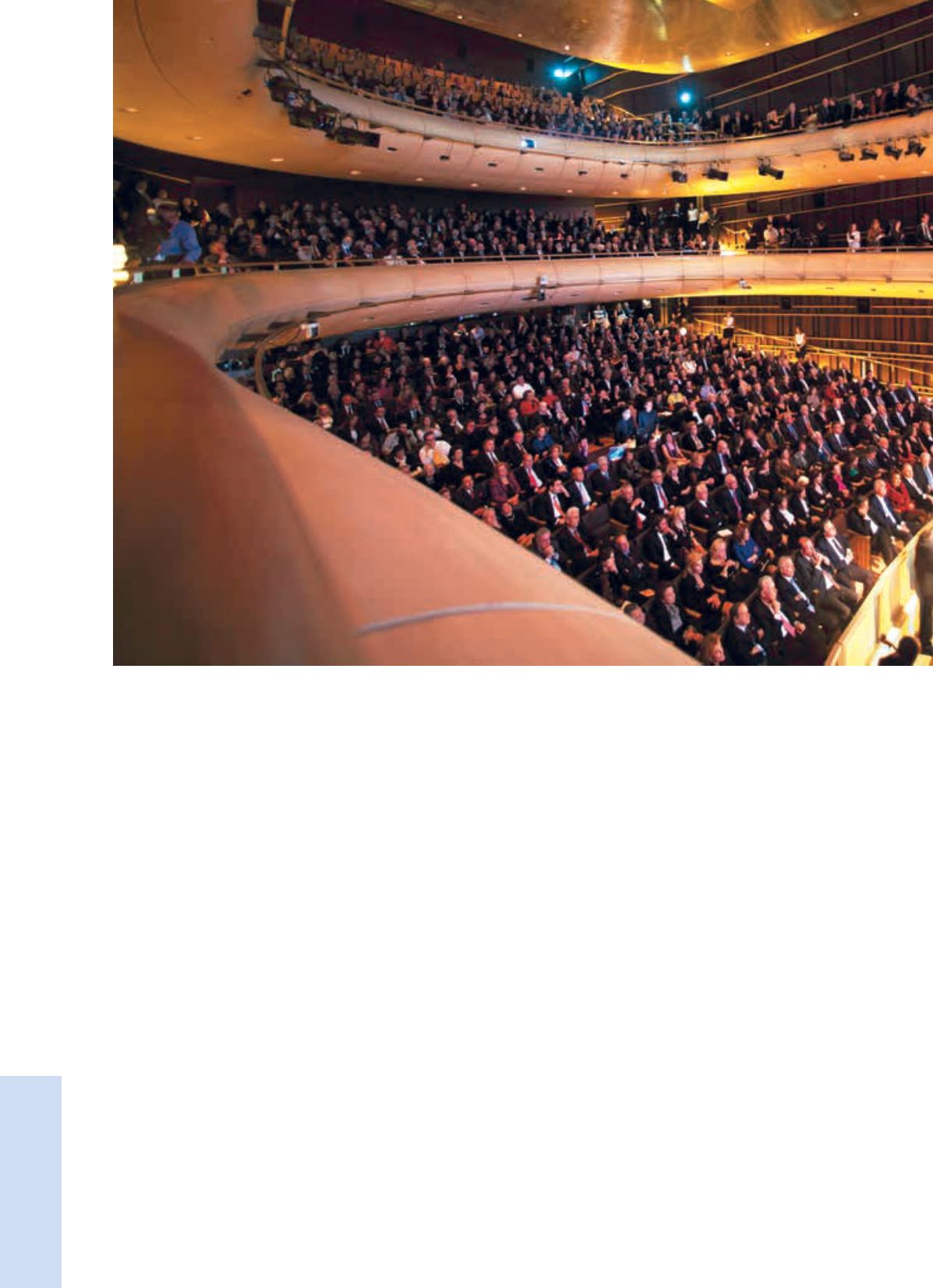
Which was the purpose of creating the Onassis
Cultural Centre?
Our vision was to establish an institution that would
support modern Greek culture, showcasing con-
temporary Greek artistic and literary production. We
wanted the Centre to become a podium that could
be used by both recognized, as well as fledgling,
artists for promoting their work. We are mainly inter-
ested in contemporary Greek artistic creation, with-
out, though, failing to invite major foreign art pro-
ductions, since current domestic art creation cannot
be separated from the work performed abroad by
both Greeks and non-Greeks. However, all our orig-
inal intentions would be meaningless had the pub-
lic not embraced this effort. And this is why we are
addressing our call to everyone, in an effort to erase
any dividing lines. Deeply believing that culture is,
or at least should be, a public good.
“This is the place that will promote new Greek
culture”, you said at the inauguration ceremony
for the Onassis Cultural Centre. Which fields of
contemporary Greek culture can help Greece
leave its mark in the global scene?
It is my personal belief, as well as the belief of all my
colleagues at the Centre, that Greece has a lot to
offer to the international cultural process. We are
trying to promote new trends in theatre, dance,
visual arts and music, and to give a voice to Greek
thinkers who are contemplating and discussing
issues of concern to our society. The co-existence
of various forms of art, the artistic synergies that
govern the Centre’s scheduling, as well as the dia-
logue between Greek and foreign artists, are the
elements that, I hope, will bring to light the pluralism
and, to a certain extent, neglected potential of con-
temporary Greek artistic expression.
Is there a discernible “Greekness” in contem-
porary Greek culture?
This is a very tough question that quite a few peo-
ple have tried to address. It is self-evident that an
artist’s work is informed by his or her background,
as well as by the legacy of previous generations.
There are certain artists, such as Moralis, whose
Greekness is explicit; other artists, like Kounelis,
Antonakos, or Samaras, whose Greekness is more
subtle, and finally there are those, like Stamos,
who, I believe, carry a totally international identity. It
depends on the viewer’s perspective and analysis.
I cannot, however, forget that all kinds of art have
roots in classical antiquity. Therefore, one could
Trade with Greece
152


